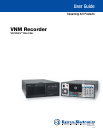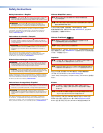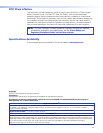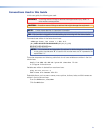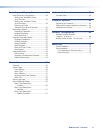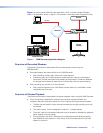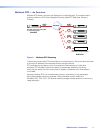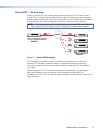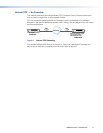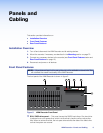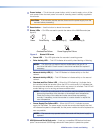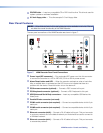
About RAID5 Storage
RAID storage is a system which allows hard drives to be linked together to form a single
large capacity storage device that offers superior performance, storage capacity, and
reliability over other storage solutions.
The VNM Recorder uses RAID5 storage. RAID5 storage provides the following advantages.
z Increased storage performance.
z Full data redundancy which allows for data backup in the event of a hard drive failure.
z A hard drive is set aside as a hot spare drive which is used to automatically rebuild the
data of a failed drive and allow the system to recover.
Transport Protocols Used for Streaming
The source data from a VN‑Matrix encoder can be distributed to multiple displays/decoders
(one‑to‑many) or to a single display/decoder (point‑to‑point). A previously recorded stream
can be distributed in the same way and may be thought of as an encoder in this context.
A stream may be transported from the source (encoder, recorded stream) to the display
(decoder) using one of three methods:
z Multicast Real‑time Transport Protocol (RTP)
z Unicast Real‑time Transport Protocol (RTP)
z Unicast Transmission Control Protocol (TCP)
By default, the VNM Recorder provides a choice of unicast RTP or unicast TCP transport
protocols. A multicast transport protocol may be configured if required (see Multicast
Enable on page 40 of the Config Page section).
NOTES:
• During playback of a recorded stream, the default transport protocol used is unicast
R T P.
• When a stream is recording, the VNM Recorder may be considered as a display
(decoder) device.
VNM Recorder • Introduction 3



